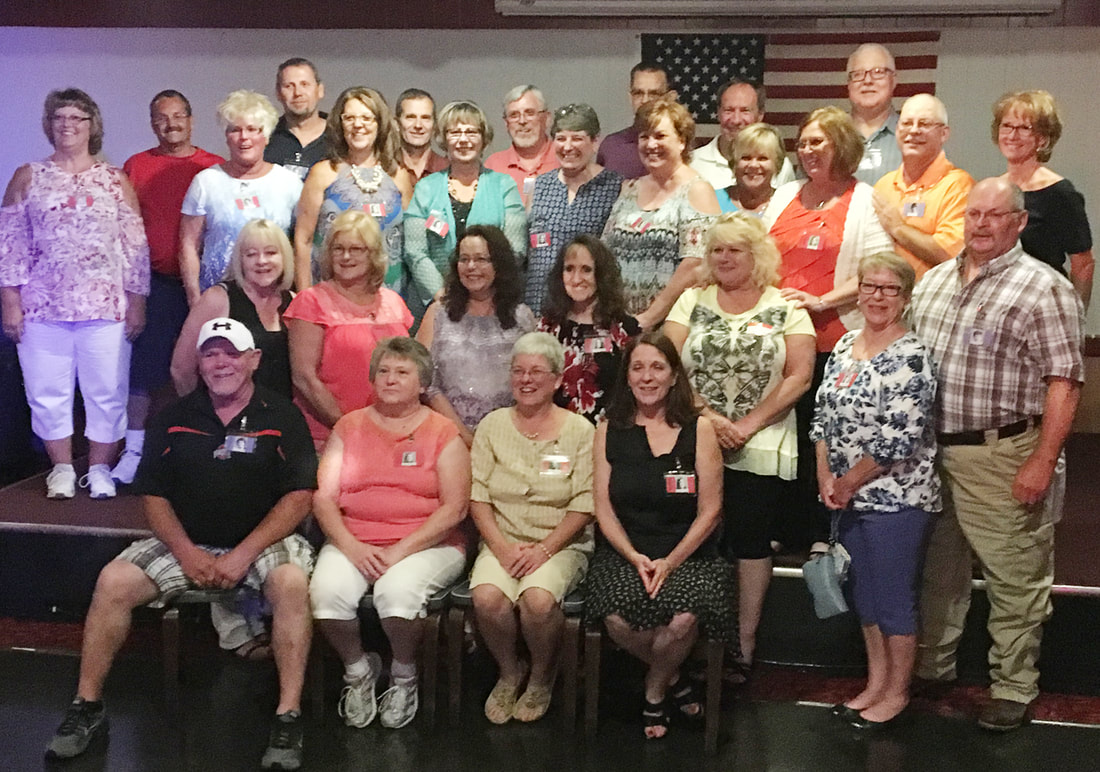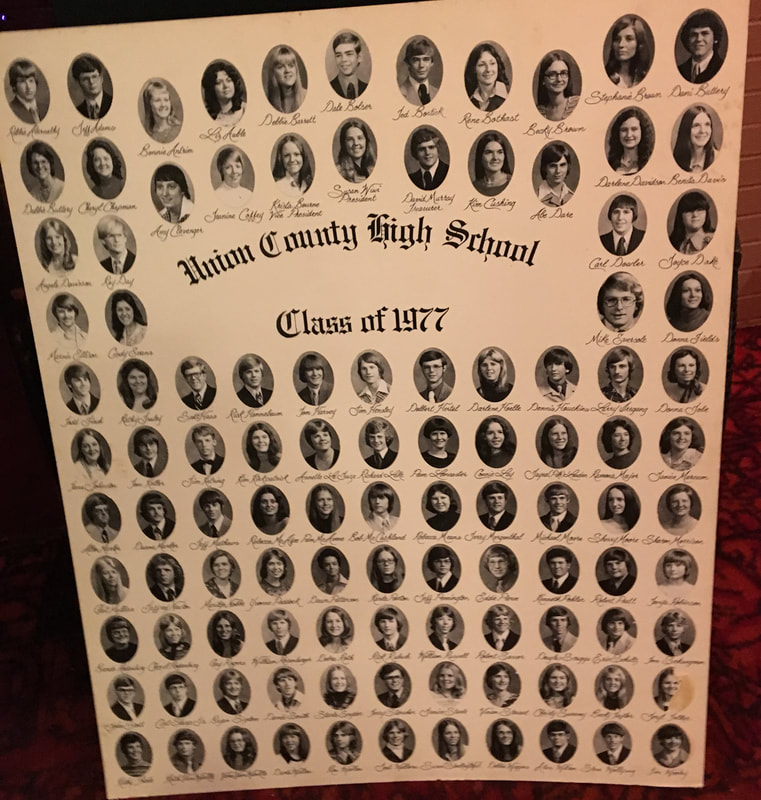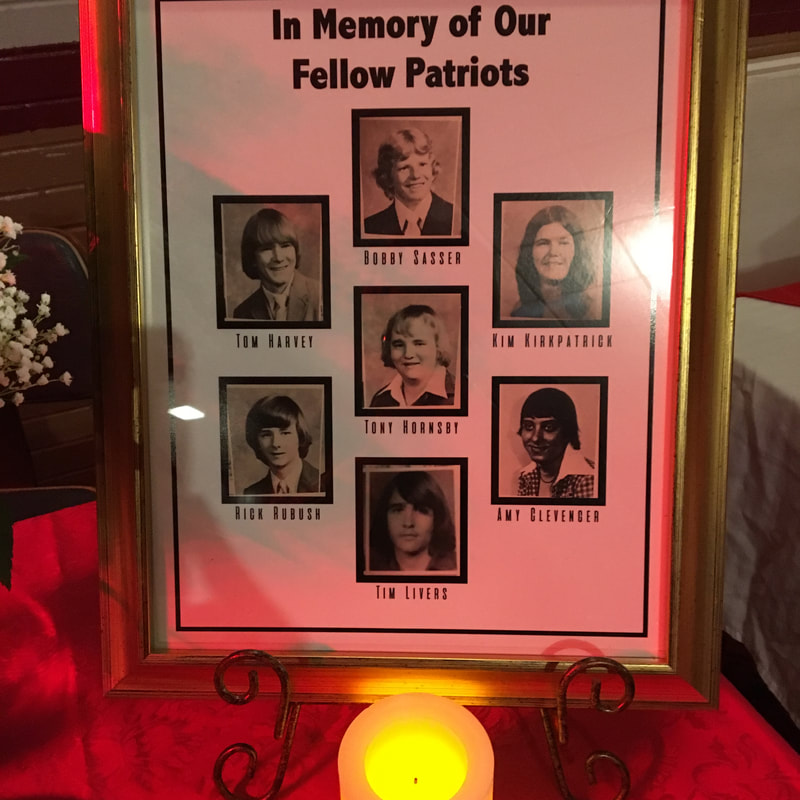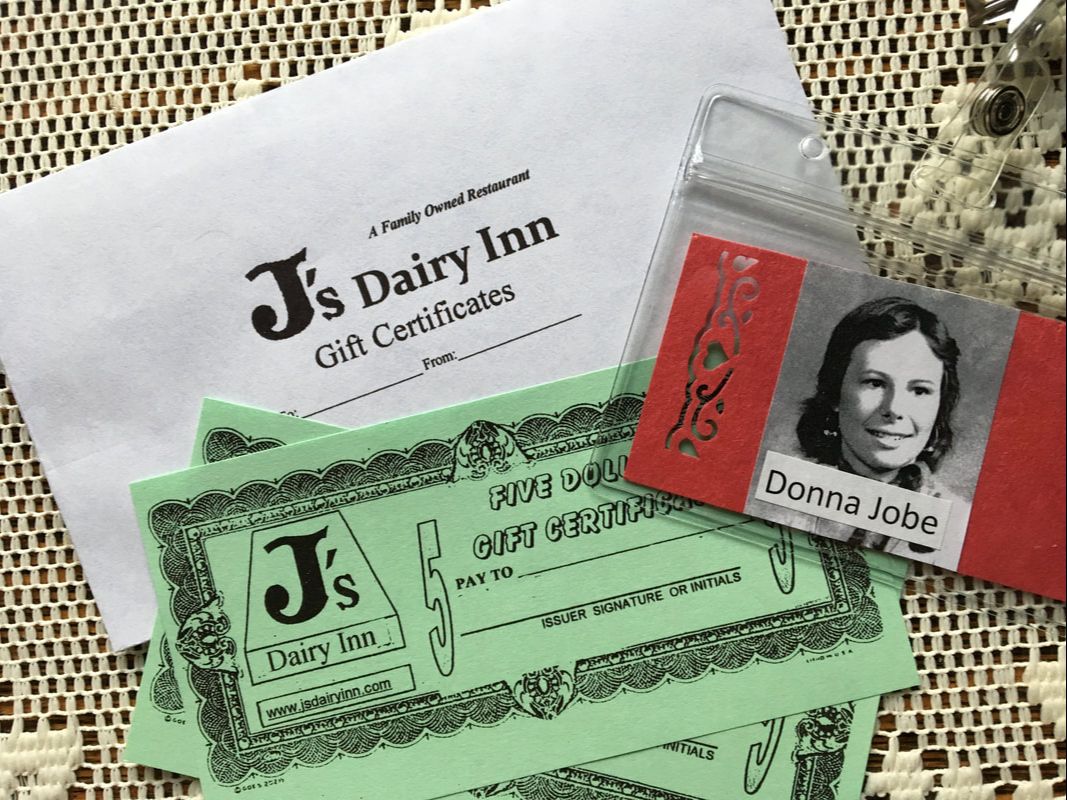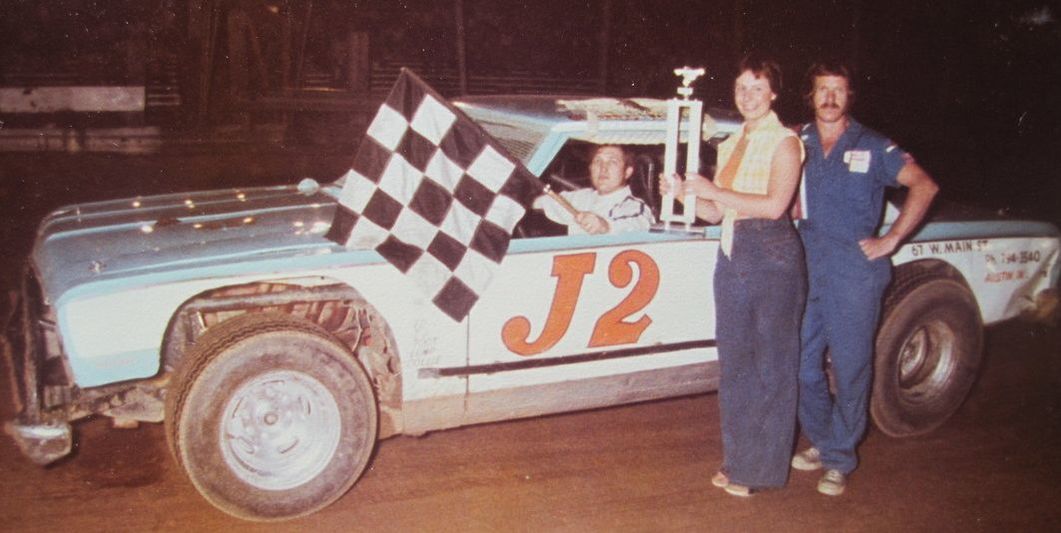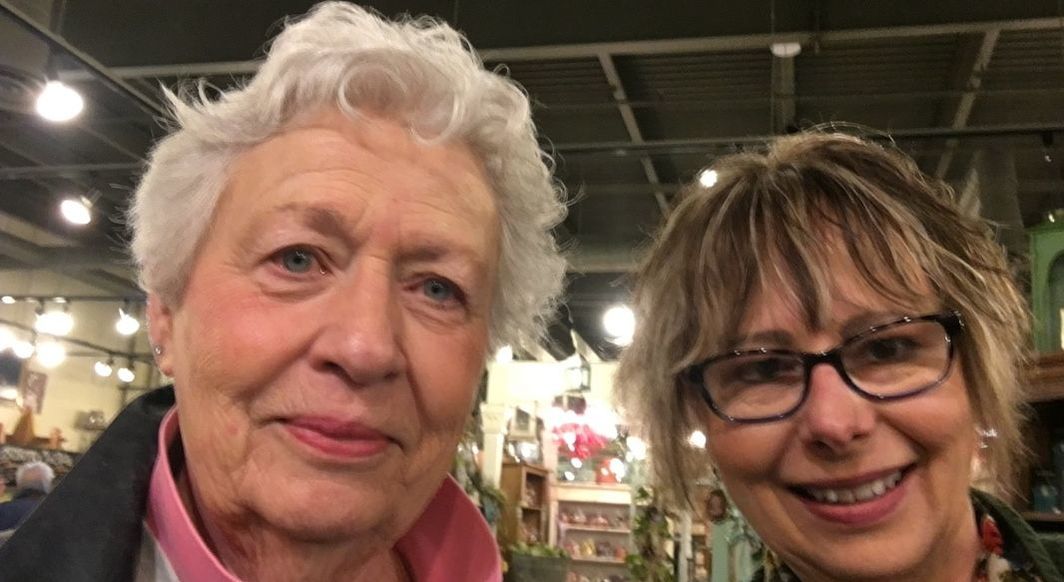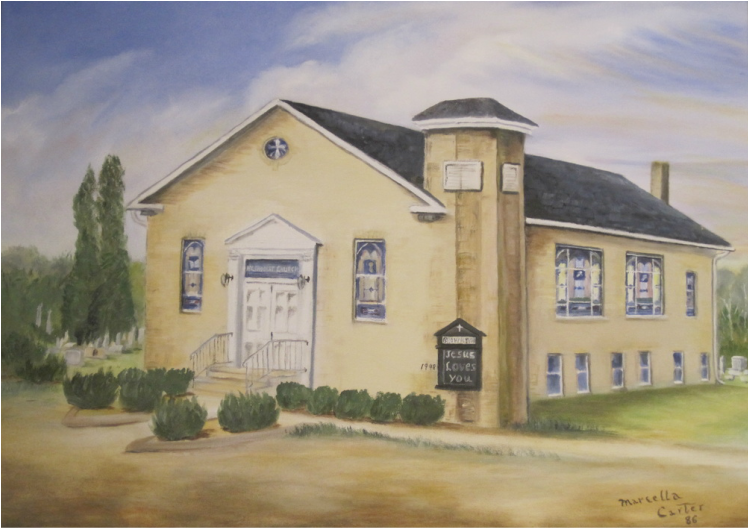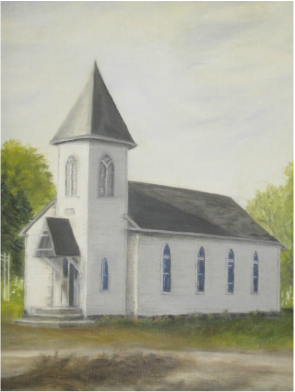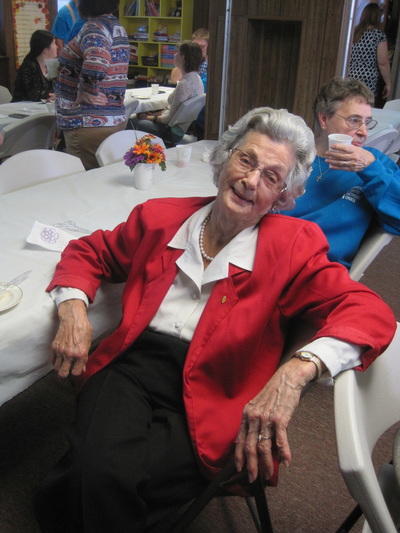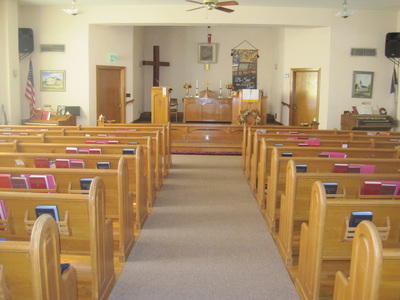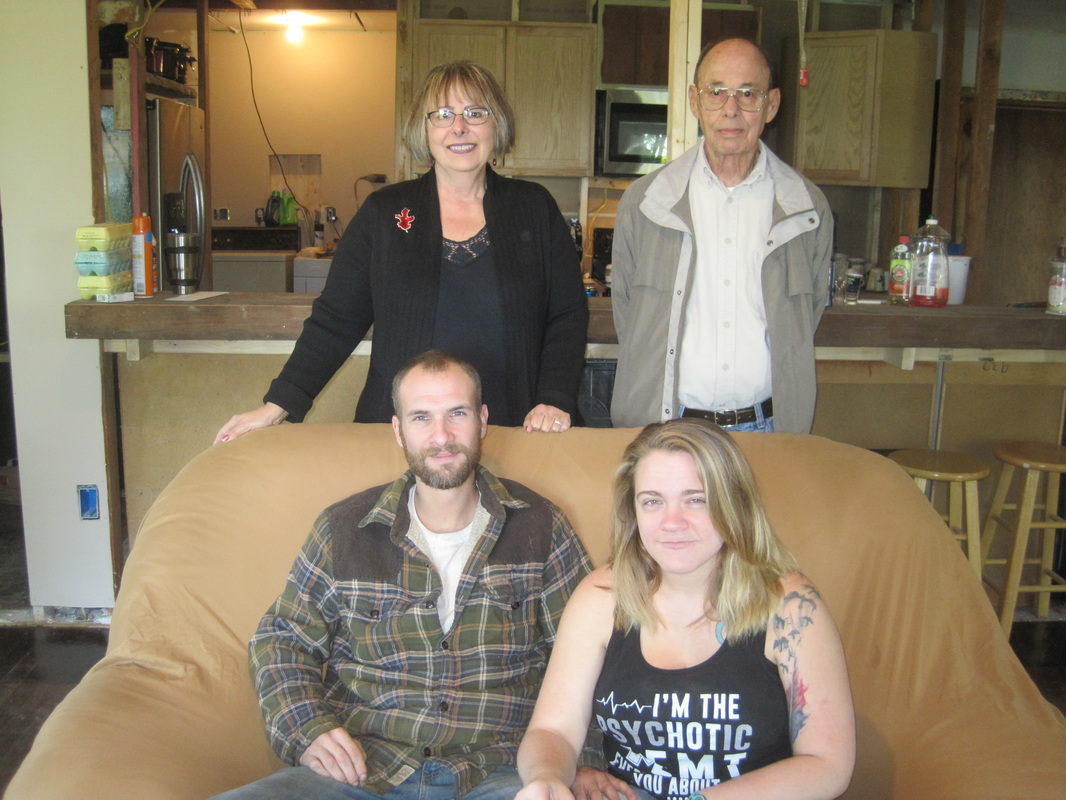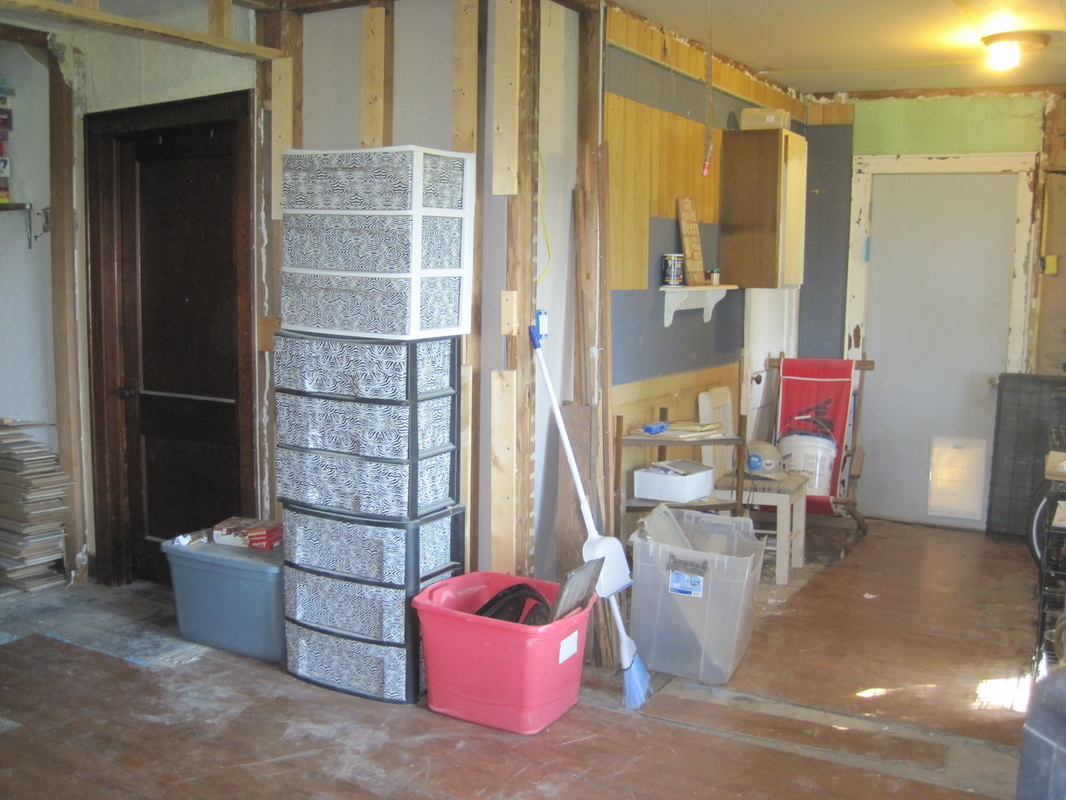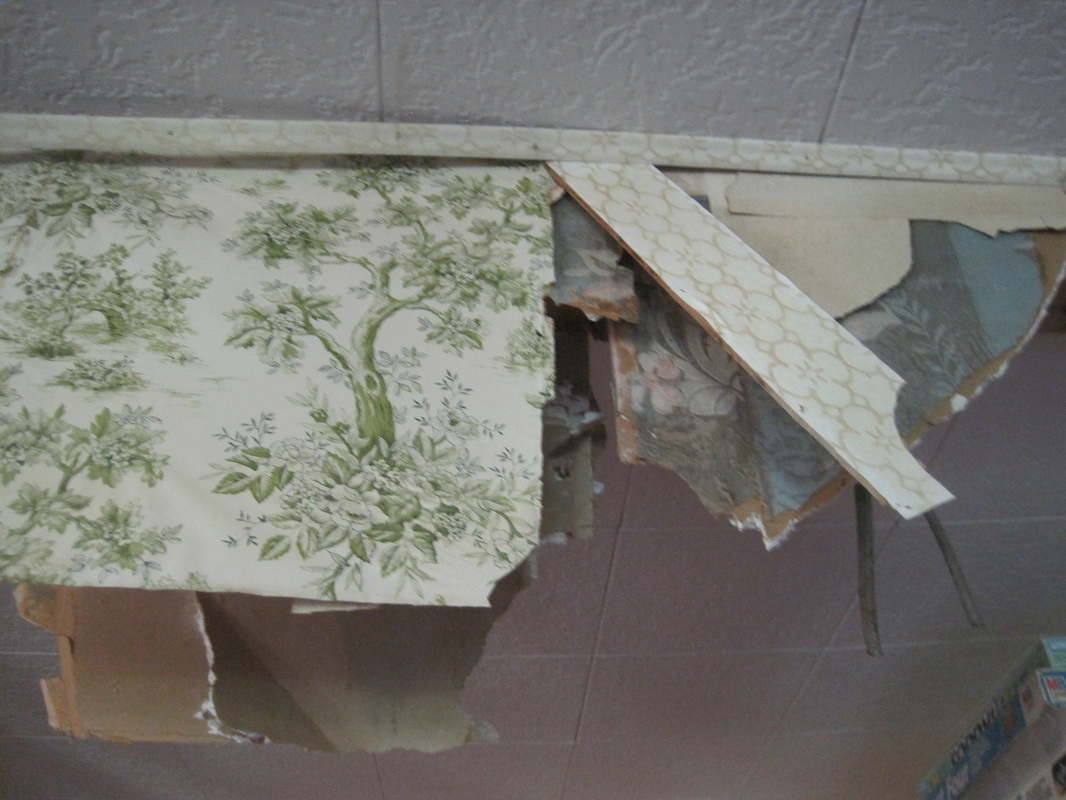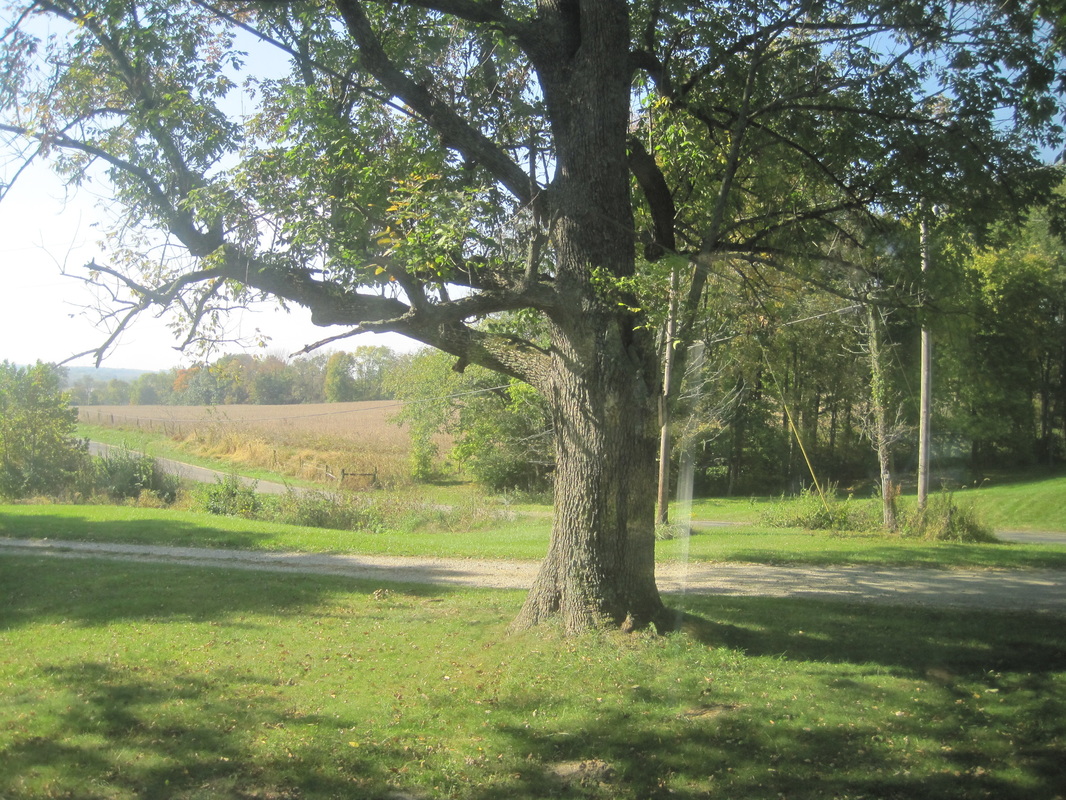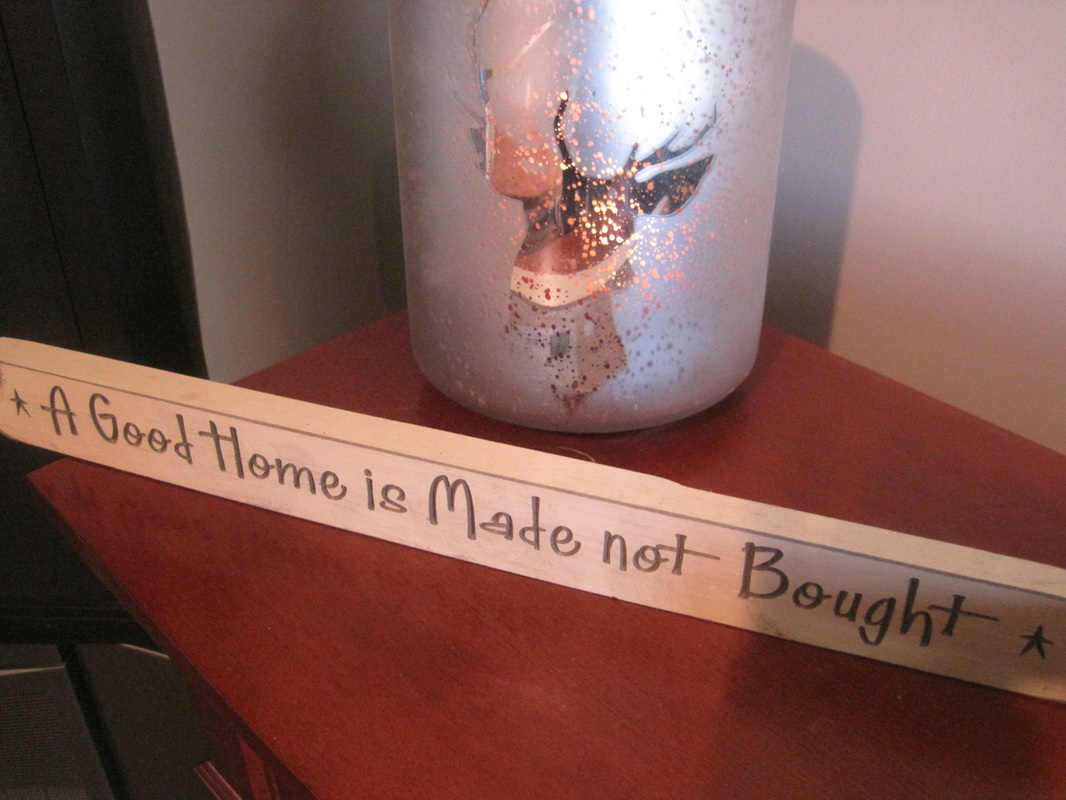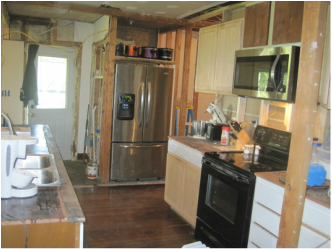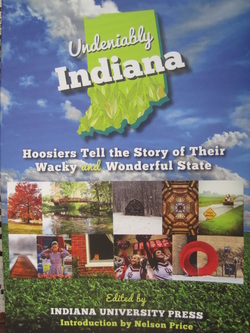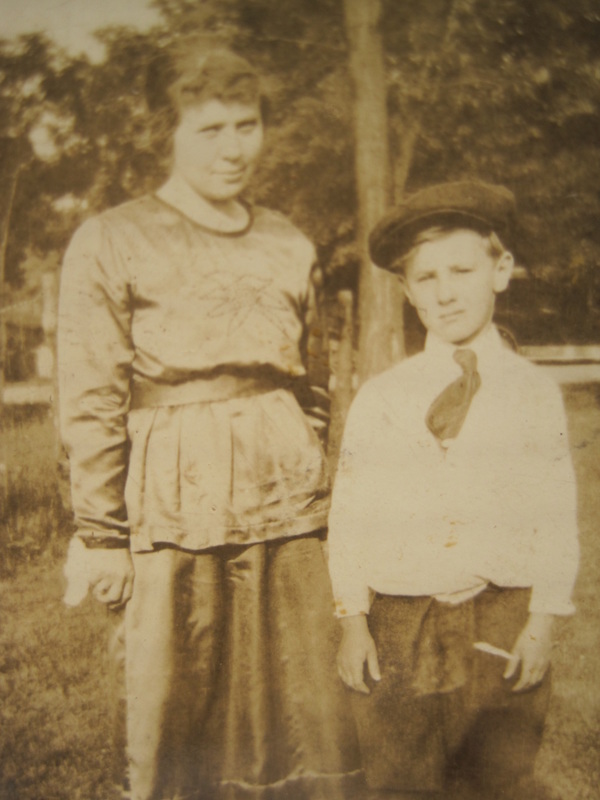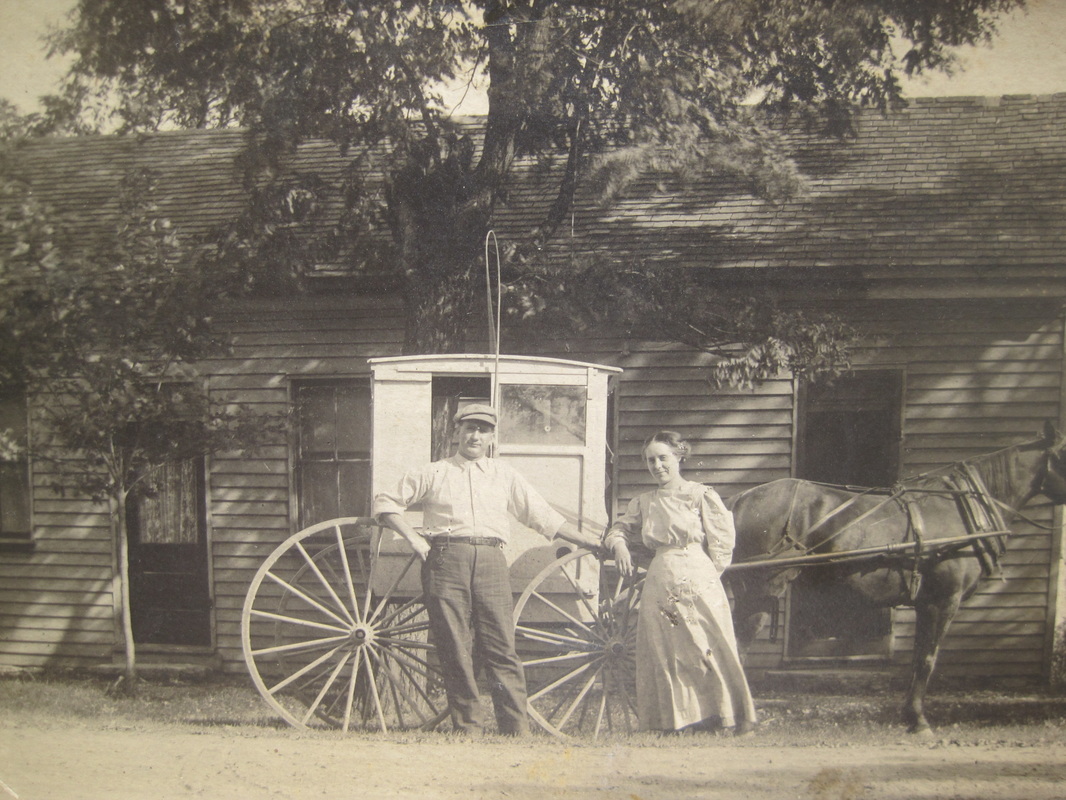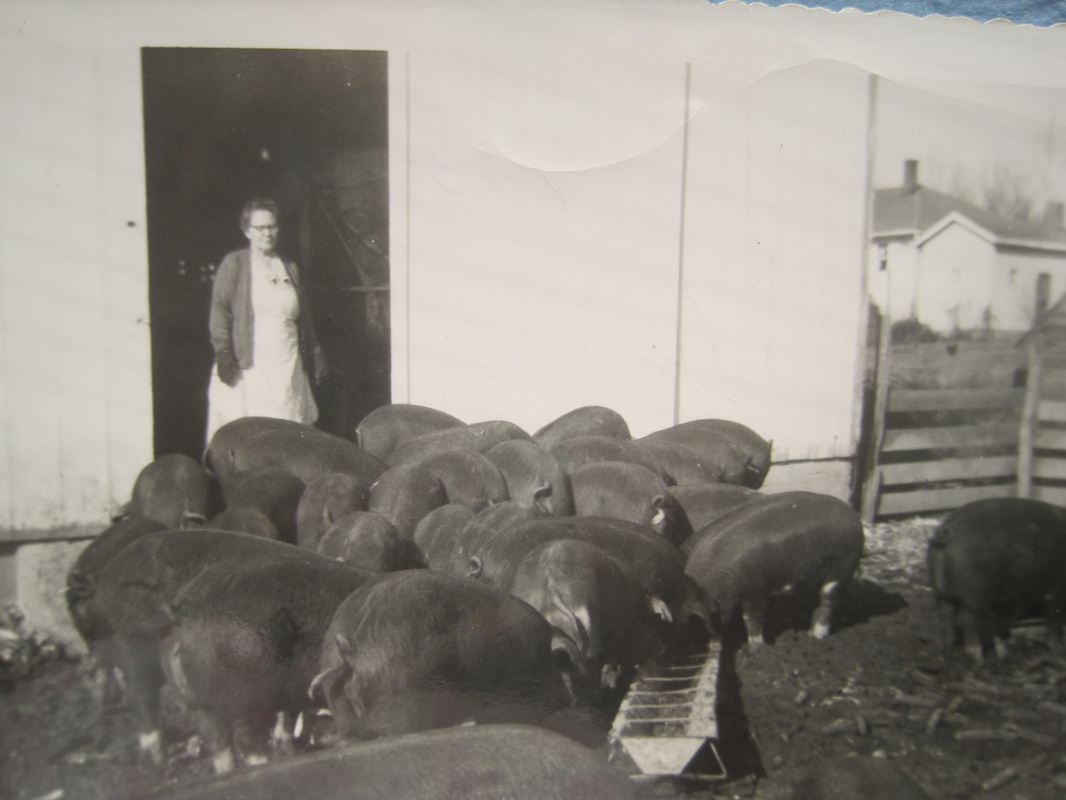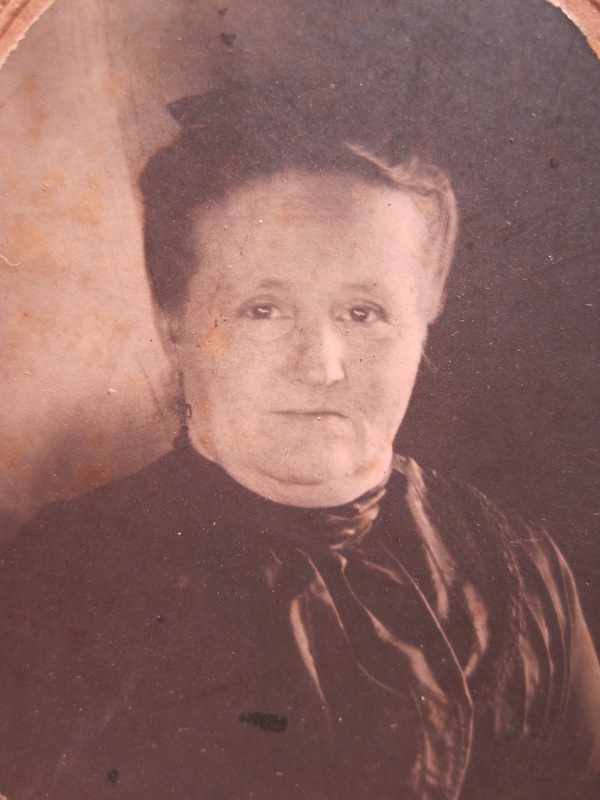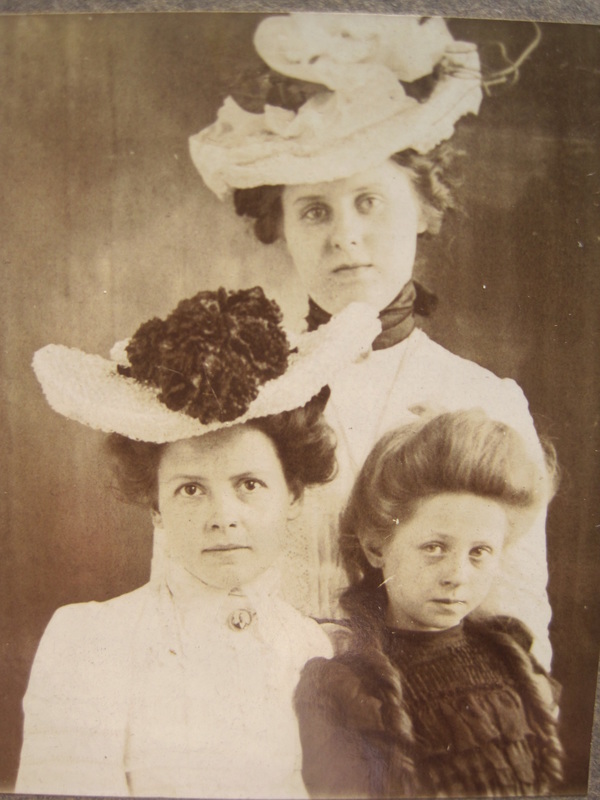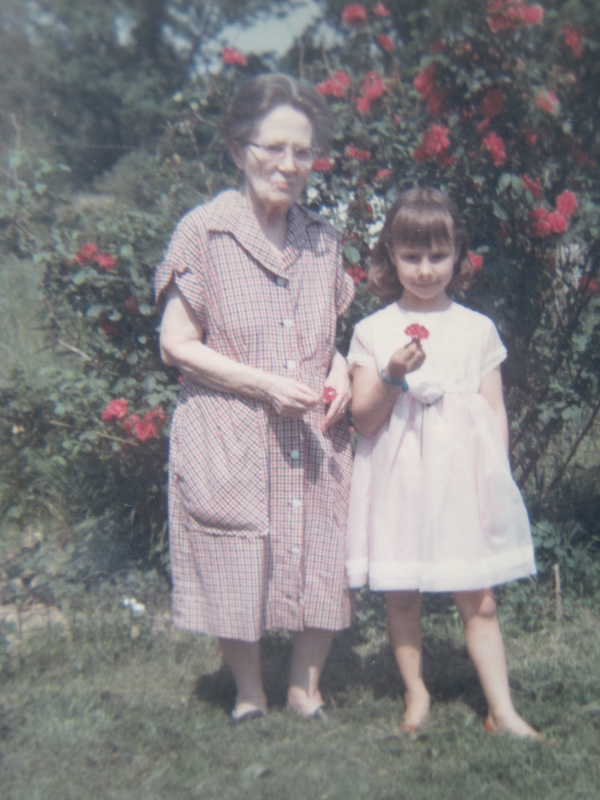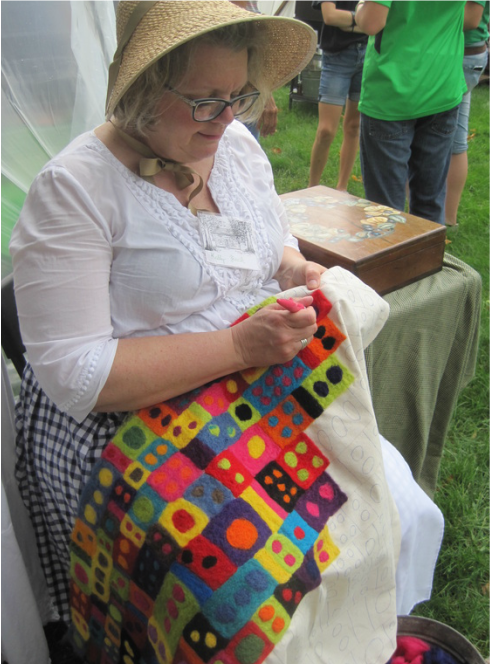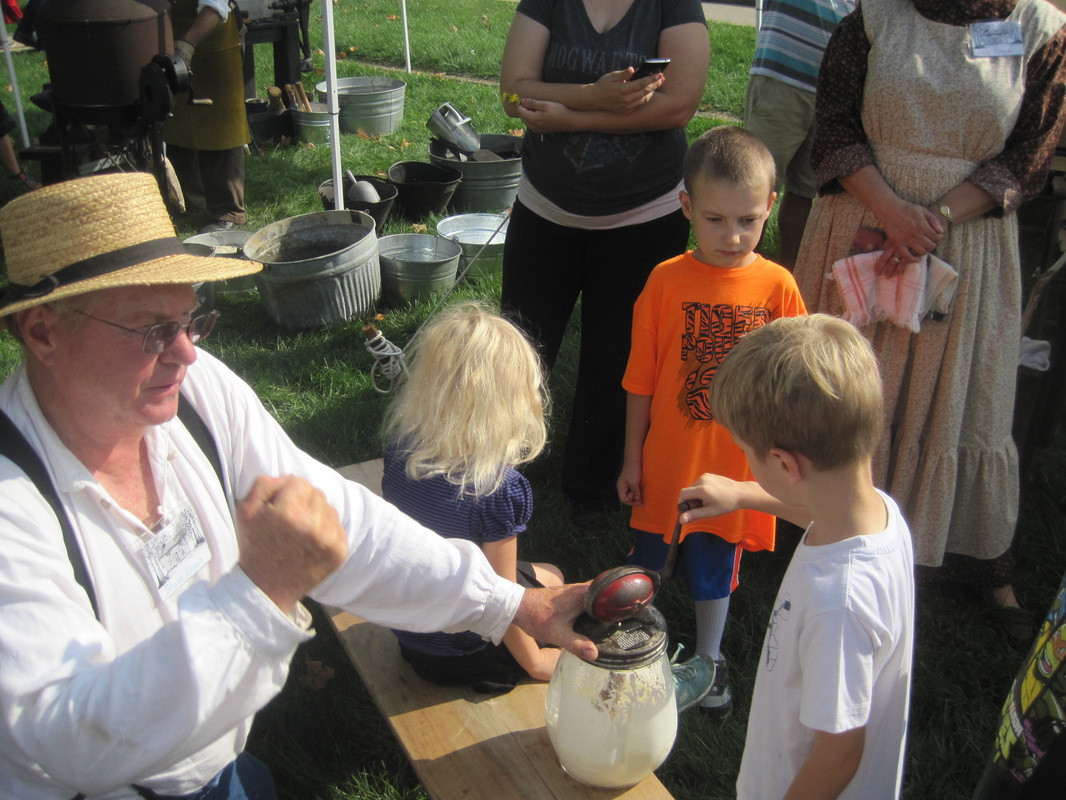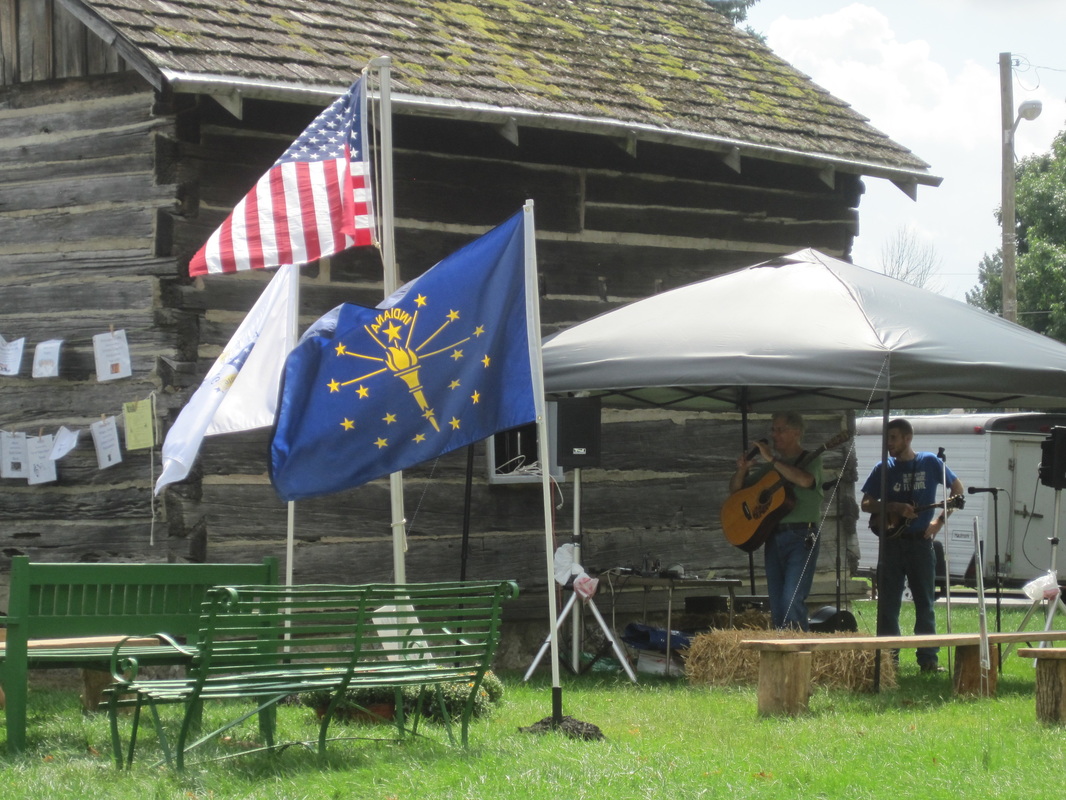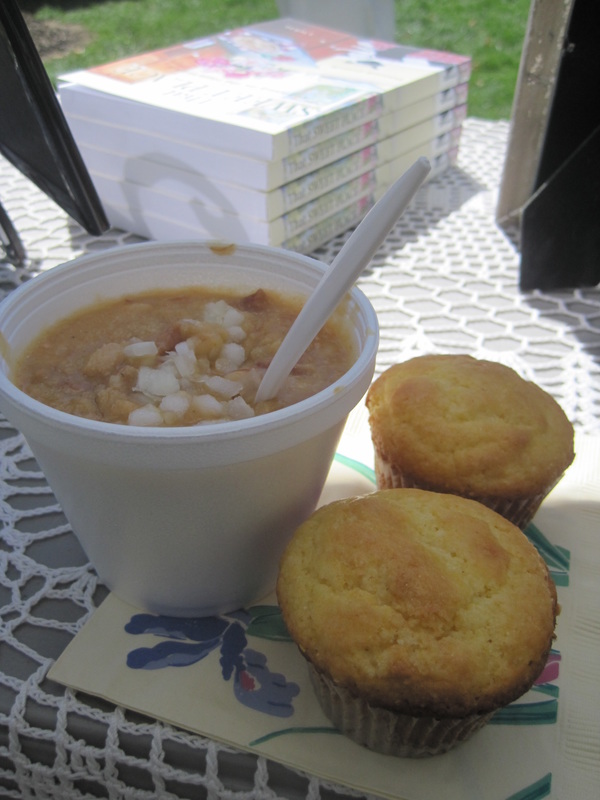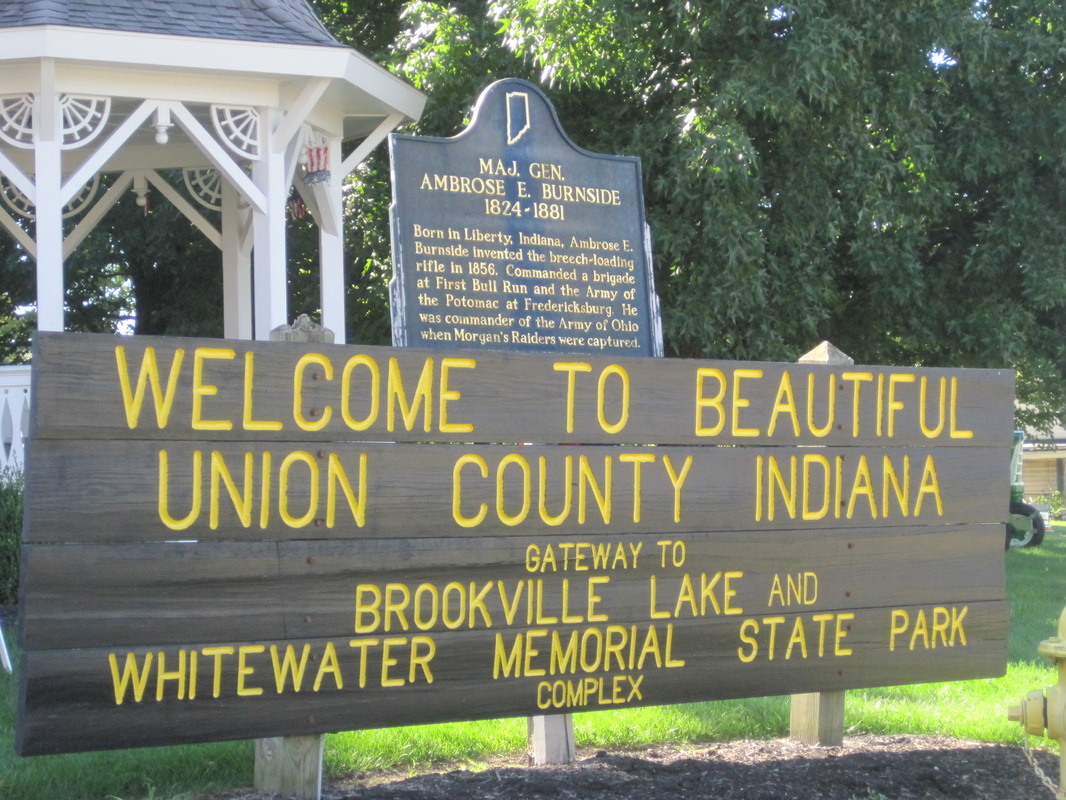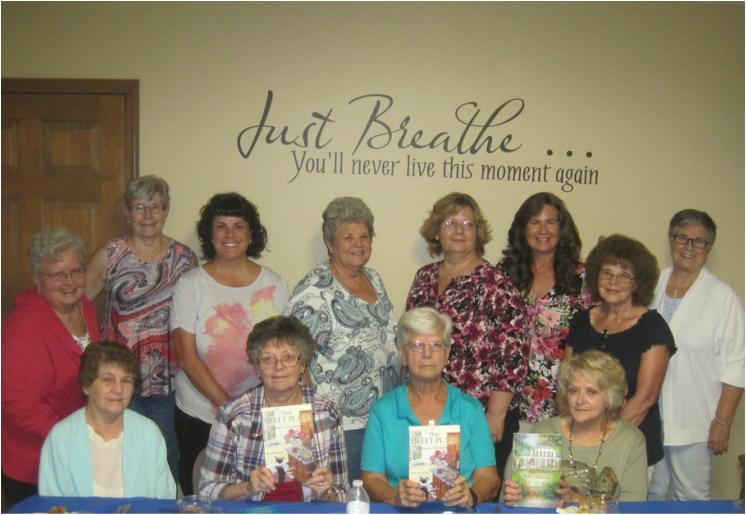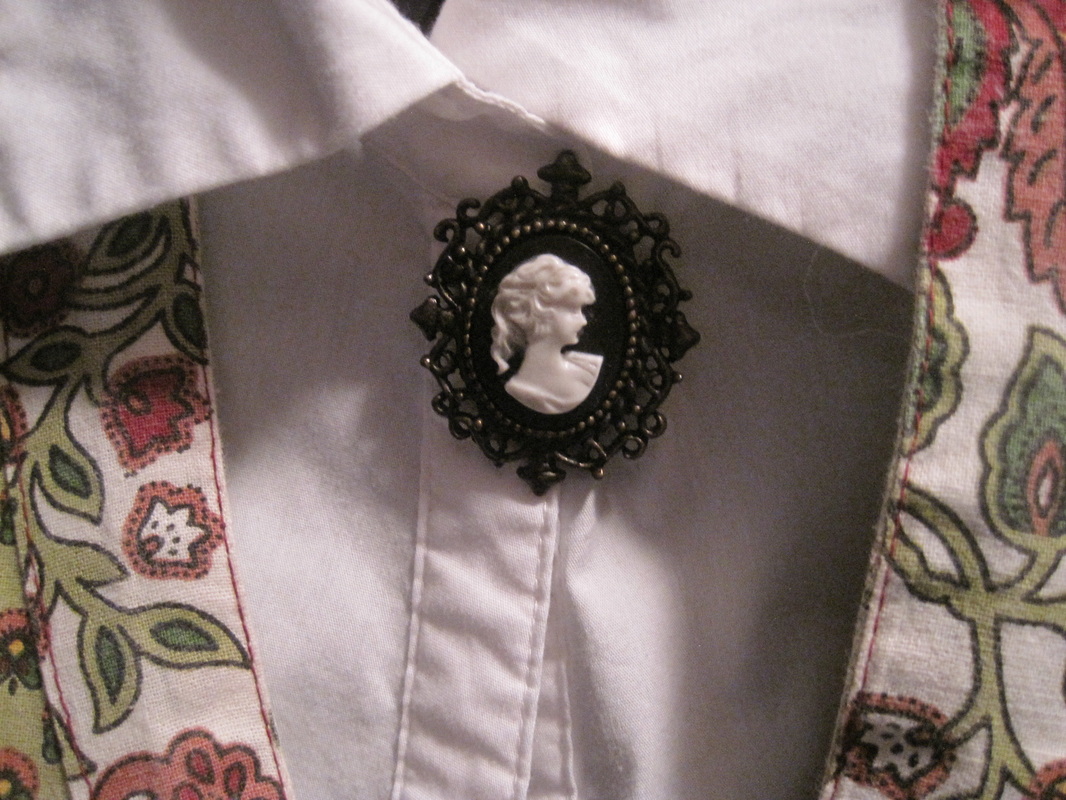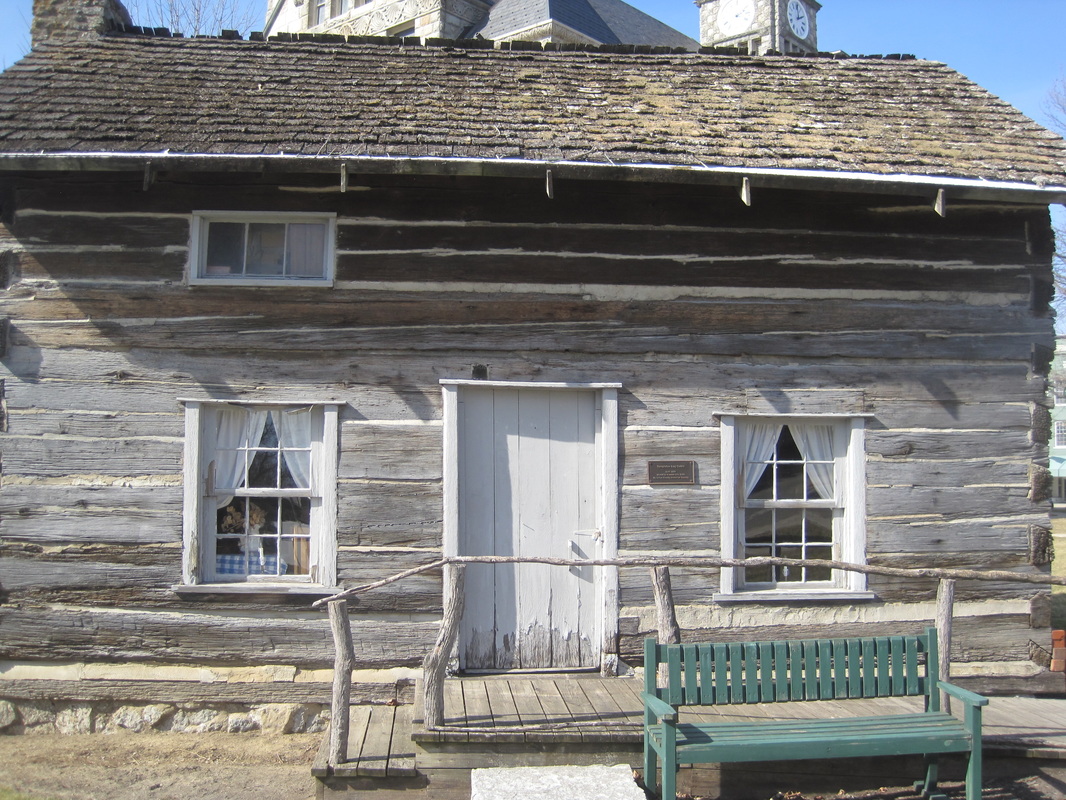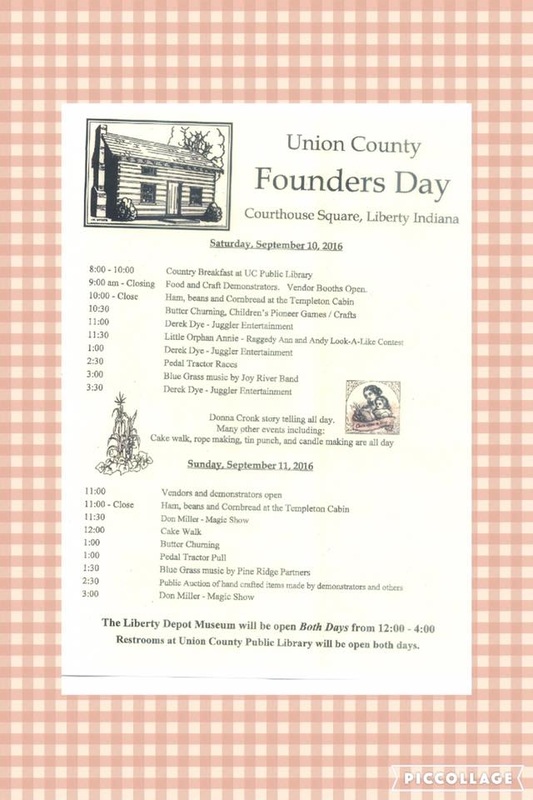|
The year was 1977. Jimmy Carter took office. Our beloved Union County Patriots basketball team won the Connersville sectional after several years of heartbreakingly-close title runs. "Star Wars" was the buzz, and Elvis died. Rod Stewart told us that “Tonight’s the Night” and Andy Gibb crooned “I Just Want to Be Your Everything.” For 130 or so kids from Liberty, Indiana – and Brownsville, Philomath, Dunlapsville, College Corner, Kitchel and Cottage Grove – it was senior year. I had gone to school with many of these kids from day one. My zany best friend all through school days, Cheryl Rodenburg, was that from kindergarten on. But I remember them all, and thanks to social media, get to see a good many of them live out their lives. Or at least casually grab a glimpse at their family picnics, see their adorable grandkids, or where they went on vacations. This is who we were. Maybe because of the way social media brings so many of us together, that’s why the 40th class reunion didn’t seem all big and scary, somehow, as did the 25th when many of us weren’t plugged into each other’s lives. Last night was the night, as several of our local gals who had the good fortune to remain in our home county, had worked to plan the reunion. They spent hours and hours pulling it all together as the centerpieces featured hand-cut pictures of us all. They created a touching framed memorial to the seven of us who have passed on. They awarded door prizes and did so much more to make it a lovely evening for everyone. The former Lynn Stanley won the J’s certificates – and to my surprise passed them on to me. We had just been discussing the iconic restaurant and hangout. I’ve often said if even today I sat in J’s for an hour during a busy lunch hour, I’d see every person I have ever known pass before my eyes. An exaggeration, of course, but hey, now I have a new reason to visit – free food. We gathered at The Castle in Connersville, some 50-plus of us, including spouses or friends.
For just an evening, an evening that went by too fast, amid talk of how we should do this more often, we all felt oddly at home again, I think, in a way that only growing up together can make a person feel. When we meet again, it will likely be for our 50th. Sigh. But for one lovely night, we were back in the 70s. Not a bad place to be, for sure.
8 Comments
I’ve watched with interest this spring as the old auto-racing track west of Liberty reemerged after years closed as the Route 44 Speedway.
My great-nephew, A.J. Jobe, is the Voice of the Speedway. Yes, A.J. is named after who you think he is, the famous Texan racer and four-time winner of the Indy 500. And yes, if you are thinking young A.J. gets the racing bug honest due to his name, well, you hardly know the half of it. My late brother, David, was crazy for racing, exceeded only by his son, my nephew Mike. Mike is A.J.’s dad. So when a Friday night rolls around each spring week, I think of A.J. up there in the press box, announcing, interviewing, adding color and character to his job, as I know he is fully capable. I think of other Friday nights at the same track, too; forty years ago this spring, to be exact. I remember the year well because it was the same spring I graduated from Union County High School. It was the same spring I tried to figure out what I needed to do to become a newspaper reporter, and while I was figuring, with my eye on a day-job opening at The Palladium-Item in the advertising department, I worked Friday nights at the track concession stand. It's funny to think about now, but I did get that job in advertising, and when I did, I gave up my stint at the race track. Since then, I've known several people who worked in the newsroom at the Pal-Item, including my current publisher. But none were there that summer. That year on Mother’s Day I got the worst sunburn of my life--at that track. Opening day was coming and the bleachers needed painted in a hurry, causing the crew to put in a long day on the holiday. I was on the crew that smeared paint on the boards and by the end of the day, I was aglow in red. On Friday nights, the vaguely-onion-flavored burgers simmered in one of those huge, white warmers you may still see biding time on a church-kitchen shelf. They were surprisingly delicious, too. The menu certainly included hot dogs rotating in their heated glass case, along with the pop, popcorn, and other concession fare. I often worked the cash register, and the evenings went by quickly as there was a constant flow of people digging out payday cash from their bank envelopes, and enjoying a night in the rural countryside, the track perched atop a steep hill just east of the Whitewater River on State Road 44. But the best thing about working at the track was the possibility of being called upon to serve as the evening’s trophy girl. The concession stand, evidently, was the bullpen of sorts for teenage girls to be tapped to head for the track near the end of the evening’s feature event, poised and ready to present the winning driver with his trophy. It wasn’t a position one could campaign for, only one that I don’t imagine any girl in the concession stand that summer would turn down. At least twice that spring, I was asked. It’s the closest I’ve ever been to a “queen” of anything. The process was simple. Someone would come to the concession stand, and holler, "Hey, we need a trophy girl!" If he looked your way, you were it. I’d like to say that the job meant a lot of responsibility, but it didn’t. You smiled, presented the trophy, and if the sweaty driver offered a peck on the cheek, so be it. And then you hustled back to your cash register, or to the simmering burgers, and spinning dogs. Forty years later, a Jobe has returned to the race track of my youth where he speaks to and for the track and fans. The speedway has been reinvented by a new owner excited about its future. There was an official ribbon cutting. I’ve always figured the trophy girl credential would surely come in handy sometime along life's way. Not in a resume kind of way, but as a roll call answer or odd fact about the most unusual job I ever held. I'm still waiting. Until that day comes, I'll go with this blog post. 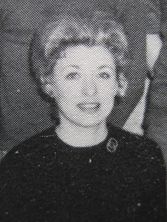 Then-Mrs. Kratzer ... from my junior high yearbook. See the circle pin? Then-Mrs. Kratzer ... from my junior high yearbook. See the circle pin? As I sat at my station at Warm Glow Candle near Centerville Friday hoping to move a few books, I looked up and recognized her immediately. As I live and breathe, it was Mrs. Joan Kratzer, my eighth-grade history teacher. “Mrs. Kratzer!” I instinctively bellowed, jumping from my chair to greet her. It had been 44 years since I sat behind Vonda Hoppes in the old Short High School, which in our day, served as Liberty Junior High. No doubt Joan Kratzer (Mrs. Kitterman now, having married her high school sweetheart after she lost her long-time spouse) had surely heard her name blared out too many times to count from admirers: former students, or patients of her late father, long-time Liberty family doctor, James Lewis. I fell into both camps. I loved and looked forward to her classes with her always engaging and amusing presentation of American history, and Dr. Lewis was my family’s doctor whom I associate with both shots and sticks of Juicy Fruit--peace offerings for the shots. About both father and daughter, however, I have nothing but respect. Doctors and teachers were celebrities in my small-town world. You looked up to and trusted both. They were the community leaders, and the good ones (there were many) made you better for knowing them. If they weren't your favorites, well you learned from them anyway, a foretaste of life to come. Joan Kratzer Kitterman didn’t recognize me, I’m sure, but she did a quick survey of my table and put it together. “I read your first book,” she said, not missing a beat, joined by her sidekick, Vicky Lakoff Snyder, who also devoted her entire career to Union County students as teacher, coach, and principal. The two are pals. I must have sounded like a crazed fan, but I knew I had Joan Kratzer’s ear for only a few moments so I pulled up the memories, surprising myself even, with what came out. “I’m sorry about the loss of your brother,” I told her, having read her twin's obituary recently in The Liberty Herald. He was a doctor as was his father, and the two generations before them, and she filled me in on how like their father he was. “Do you still wear the circle pin?” I asked. I recall her signature piece of jewelry and she wore it every single day. I have always thought that would be a classy thing to have, a signature statement like Joan Kratzer had. But she’s the only one I’ve ever known to have such a thing. That’s her, memorable. “Oh, yes,” she said, explaining that she didn’t wear it on casual clothing such as what she wore in the candle shop Friday but otherwise, yes, and yes, it’s the same pin. In all these decades, she has lost – and found it – twice. She told of the more than 20 times she had been to Europe, and listed some of her travels. She inquired how Brian was, as did Vicky. I always thought Joan Kratzer (er, Kitterman) was one of the most beautiful women I ever knew. She still is. As a young teen, I loved how she dressed in her perfect, classic style, with her striking salt-and-pepper (frosted, she called it) hair, and she had the clearest, sharpest blue eyes which never missed a thing. I asked her about her modeling days, and she confirmed that yes, she modeled in Indianapolis and Cincinnati. Eighth-grade was a good year for me, the year I spent with Mrs. Kratzer. I didn’t feel angst about life in that particular year the way some do about junior high. All things felt possible. For one thing, I was selected as an office aide, and it came at the perfect time every day, the lunch hour, when things were laid back. I thought surely there had been a mistake when “office aide” appeared on my class schedule. First, didn’t you need to apply for such a lofty position? And second, I didn’t think hoodlums were granted the kind of access that comes with a seat behind the principal’s secretary’s desk. In seventh grade, I had gotten sent to the office for talking. Mr. Cummins, the principal himself, had sent me, and a stern lecture came with the trip, as heard through my own excessive tears and contrite humiliation. Somehow, I had been redeemed. The office was next to Mrs. Kratzer’s room and it seemed that she was in there quite a bit at midday. She would send me to the cafeteria to retrieve for her a chef salad with Russian dressing. Russian dressing? That seemed rather exotic for Liberty. We only had Catalina at home. It was no chore at all, but rather a privilege to be asked to help a teacher in any way. I liked having insider information. I mean, who knew that the cafeteria ladies created specialties such as fancy salads? Well, I knew. Yes, being an office aide had its insights. Just like the time Mr. Cummins thought a boy needed a haircut so I watched as he cut the boy’s locks himself. (But I won't reveal said boy's name. That would disgrace my office-aide code of ethics, which far as I know has no statute of limitations.) Also that year, the energetic school secretary, Mrs. Ruth Miller, turned a spare room on the second floor into an arts-and-crafts studio and we were given an option to study hall, that of spending the hour crafting or stitching. Mrs. Miller taught me to crochet – an aside that I fictionalized in my second book. We used mostly recycled goods in our crafting such as from wallpaper-sample books. We covered everything with that free paper from paper flowers for our moms to an umbrella stand made of sturdy, leftover tubing. Her ideas and skills were those of a clever Pinterest artist decades before the website or even the personal computer were invented. Seeing Mrs. Joan Lewis Kratzer Kitterman brought back these fine memories. I’m blessed to have grown up in such a wonderful community as Liberty, Indiana. I’m so happy that this icon, the doctor’s beautiful daughter, and generations of students’ fascinating and insightful teacher, is still beautiful, fascinating--and exactly as engaging as I remember. Some things don't change. And sure enough, I wasn't the only one bending my former teacher's ear. A trio of women from the Liberty area recognized her, and another spirited conversation ensued. Guess that's what it's like when you are an icon. 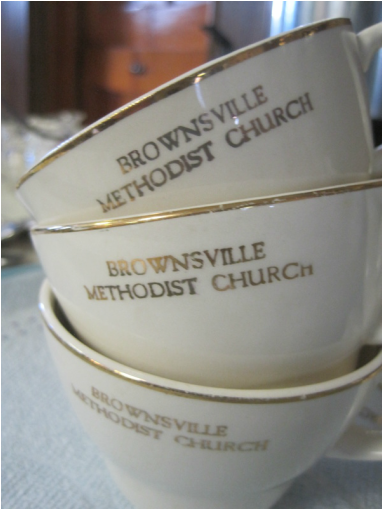 “I grew up in the boonies,” I told Brian Sunday, as we meandered along our back-road route to Brownsville, Indiana, located not far from the farm where I grew up. Of course my words didn't make for a news flash, and as we roll from U.S. 40 to Abington to Brownsville on this gorgeous November morning, we’re reminded that this area is still the boonies. Even so, imagine how much more so it would have been in 1806. That was the year on our minds, the same year that the Methodist Church became a presence in tiny Brownsville. We were headed there to celebrate the occasion with not only members of the current Brownsville United Methodist Church, but with visitors, with the Greenwood Church Methodists, and with Liberty's Edwards United Methodist Church choir. My lifelong friend, musician Karen Parks Bunch, was there to sing and play piano, accompanying church organist Charlotte Telker. Karen provided the special music along with her husband, the Liberty church’s choir director Kevin Bunch -- and with the choir. As I did, Karen grew up in that little Brownsville church. While our hometown church has been served continuously by Methodist preachers starting with the early circuit riders in 1806, it’s interesting that the current pastor, Shelley Dodson, is the longest continually serving minister in this church’s 210-year history. She’s been there since 2004. One busy reverend, Shelley also serves the Greenwood UMC, and has a day job as interim bursar at Indiana University East in Richmond. Whew! During the service, Shelley read some key points in the history of this body. The Indiana Territory was organized in 1800, and it didn’t take long for the Methodist Church to bring its Christian influence to this little neck of the woods in what would become Union County, and become the state of Indiana 200 years ago this year. After a few years of circuit riders’ services in pioneers’ log cabins, the first Brownsville Methodist Church was built of brick in 1814, near the present building. The congregation grew and in 1828, land was deeded for a larger structure. Church history doesn’t record why the building wasn’t ready until 1844. That building, however, stood for 101 years before it burned down in a Sunday-morning fire in 1945. However, before that bad turn, things got rocky in other ways. In 1860, the nation’s Civil War divided this body and a number of members left to form the Christian Union Church in 1865. The Methodist Church went into decline to the point where windows were broken, the roof damaged, and doors stood open. In 1871, some members saved it with remodeling the dilapidated 1844 building, and it was re-dedicated in 1873. And so it went for 71 years until the 101-year-old building burned down nine days before Christmas 1945. The congregation decided right away to rebuild and they got busy with planning and fundraising. To make do, they met for services in the Brownsville School. The new church – the brick limestone that’s there today – opened in 1948. There was a big celebration over it being paid off in 1952. There was another big celebration on Sunday. It included a sermon about trusting God with the future of the church by the Rev. Mick Miller, assistant district superintendent. And being Methodists, cake and coffee followed. They even broke out the church's white china. But first came the official bicentennial photo. For that, Brian and I stood behind the pulpit in the same spot where we lit a unity candle 38 years ago on our wedding day, a fine October afternoon not so different from Sunday’s fine November one. As we stood there, I felt proud to be part of the Brownsville UMC extended family and so glad that we made the effort to attend. This church. Home. Roots. This church provides a deep sense of belonging. One attendee, the former Janice Parks, whom I’ve seen once in the last 50 years before Sunday, but whom I would know anywhere all the same, even handed me an envelope of old family photos ... photos of my family! They had been in her father, Gene Parks’ things and she thought I might like them. Where else could I be on the planet where something like that could possibly happen? Where her family would save photos of mine for somewhere around a century? And where a descendant would care enough to give them to me? To even consider that I might be there that morning? Unbelievable! That's home folks for you. Yes, I’m from the boonies all right. These boonies. If I could change that fact, change this place on the map that I call home, change this sweet church in the wildwood -- I wouldn’t. 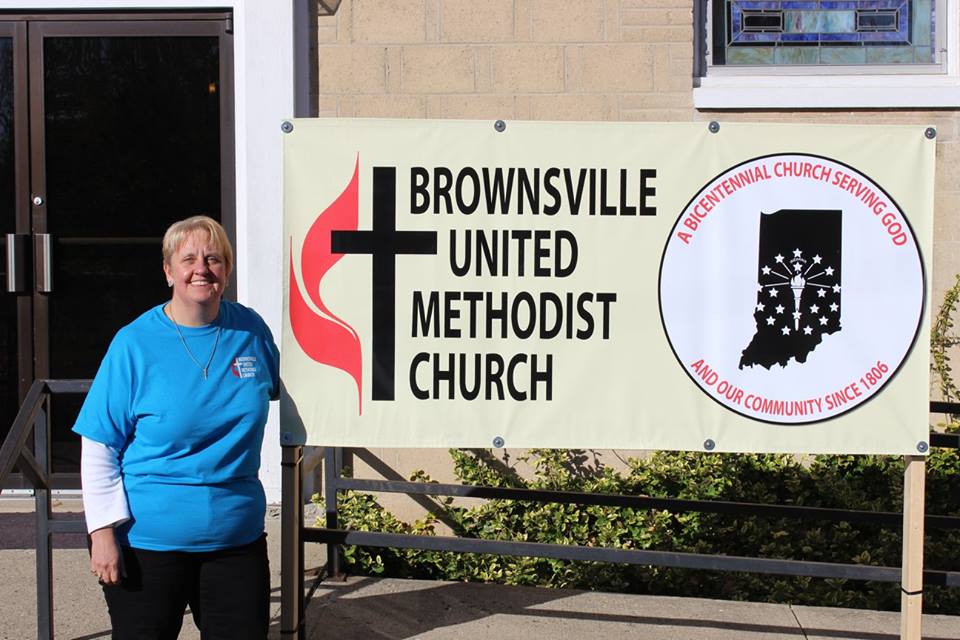 Congratulations to Rev. Shelley Dodson who is the longest-serving pastor of this church in its 210-year history. (Photo provided by Brownsville United Methodist Church) Meanwhile, below is Geneva Floyd, who at 96 works behind the scenes constantly because she loves Jesus and people, and they sure do love her. Right, a look at the sanctuary. 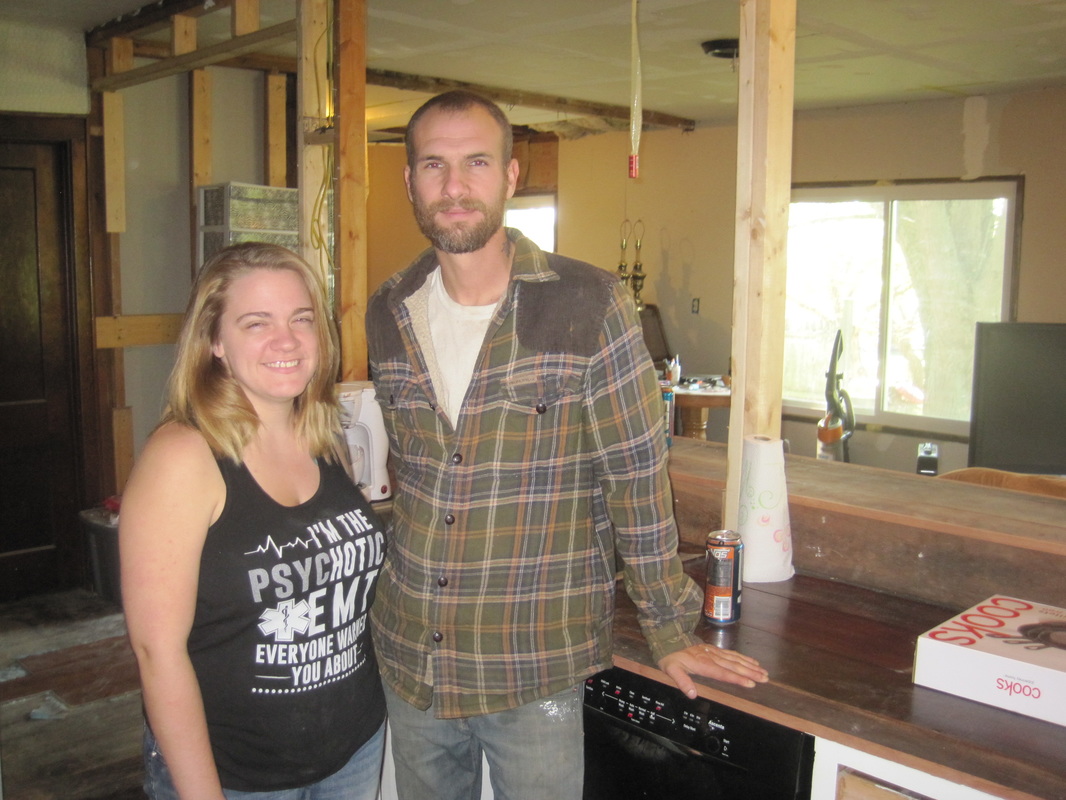 My great-niece Nicki and her boyfriend Stephen are totally rehabbing the 1920s farmhouse where I grew up. We are so proud of the work they are doing and their vision for what will be. They have so many plans for the place! For starters, they are standing in what I knew as a bedroom, now transformed into a kitchen overlooking the living room. 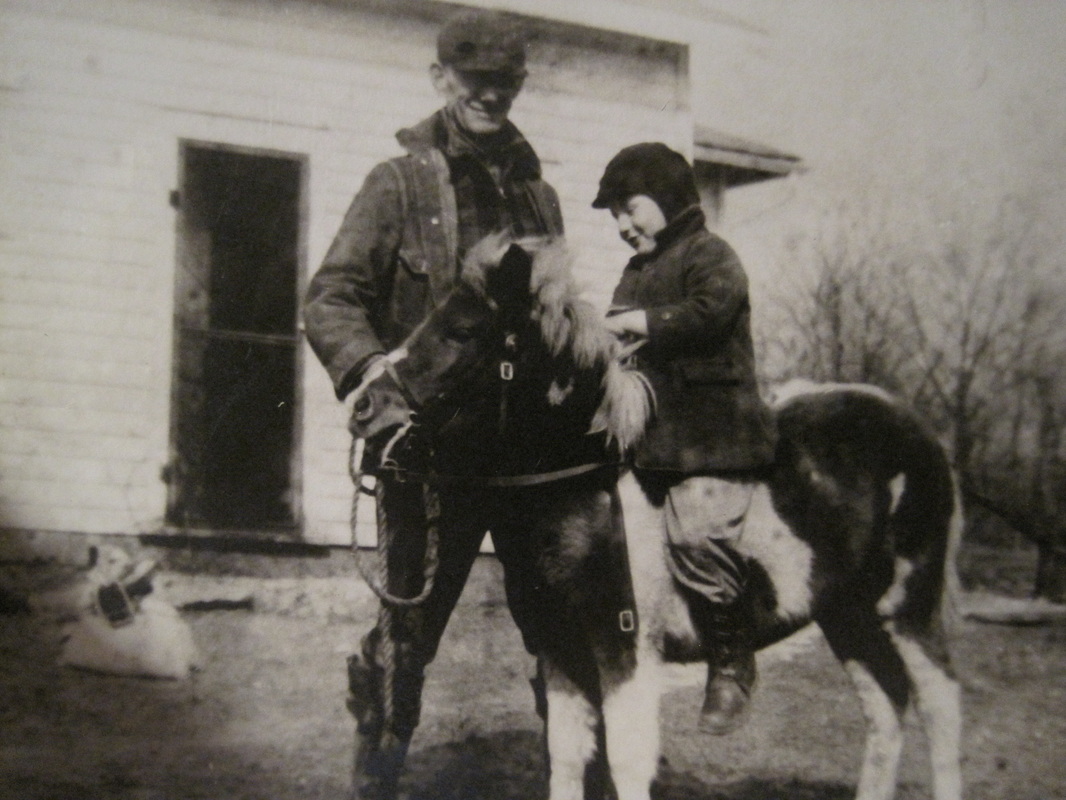 Last week I stumbled upon this image, which incredible as it is to realize, is approaching 75 years old. The man, who looks almost exactly like my dad, is actually my grandfather, Roscoe Jobe. The little boy is my late brother, David. The setting is the same pasture where my pony grazed in the late 1960s, early 1970s. The building is the summer kitchen and the house where I grew up is on the other side of it. I love this old photo for many reasons. For one thing, in decades past, people didn’t take bunches of pictures as they do now, so you’ve got to figure the photos that were taken and survive today represent special occasions or milestones of one kind or another. This picture is between 70-75 years old. I’m guessing that its significance is that my grandfather, Roscoe Jobe, had just bought this pony for my brother, the late David Jobe.
I also love it because this picture was taken in what I knew as “the pony lot,” or, referring to another era of the same location, “the chicken yard” (due to chickens residing there before I came along). My pony, Ginger, and later my horse, Buck, grazed and were saddled up in that same space 25 years after this photo was taken. By then, my grandfather had passed on and my brothers were grown. (Remember, I came along late in my parents' reproductive years.) I love the continuity that this old farm photo represents, but there is more. After my dad died, my brother David and his wife Janet built a home steps away from where this photo was taken. They are both gone now but their granddaughter lives in the home they built, and that granddaughter’s sister lives in the house where my grandparents, then my parents lived, and where I grew up (on the other side of that summer kitchen in the photo. It still stands as well). One of my future projects concerns creating some kind of order for these old photos. And wouldn’t the best of them make great gifts, enlarged and framed, for particular loved ones? I have century-old and older photos that are in perfect condition, clear, sharp and although they have not been cared for especially well through the decades, heaped into boxes and shelved, and who knows what else before that, they have come down through the generations intact and beautiful. I have to wonder what photos (the current term has evolved to “images”) will survive from the digital age. I am as guilty as the next person of taking family pictures, posting the best of the lot on Facebook – and forgetting them. Up until a couple years ago, I was good about making copies, at least. Before that, until about five years ago, I was good about not only copying them, but filing them in order in albums. I’m not so good at either now. We see how technology changes rapidly, and we change right along with it more gradually, but change we do. So the camera cards and smart phones of today that produce beautiful images will become obsolete and if the photos aren’t printed, ones depicting entire childhoods, vacations and special events, may be lost forever. It’s something to think about. Will my kids and grandkids, let alone great-grandkids, give a hoot about old photos? Will there even be remaining images of their ancestors or will today’s selfies be tomorrow’s long-lost fad? I’m curious about how others manage their vintage, as well as more current photos. How do you store them? Do you still print and fill family albums? Do you ever print photos anymore? Do you trust the “cloud” to house your content on into the future or will it be lost when the “next big thing” comes along? And even if you trust the "cloud," will your descendants be able to access those images? 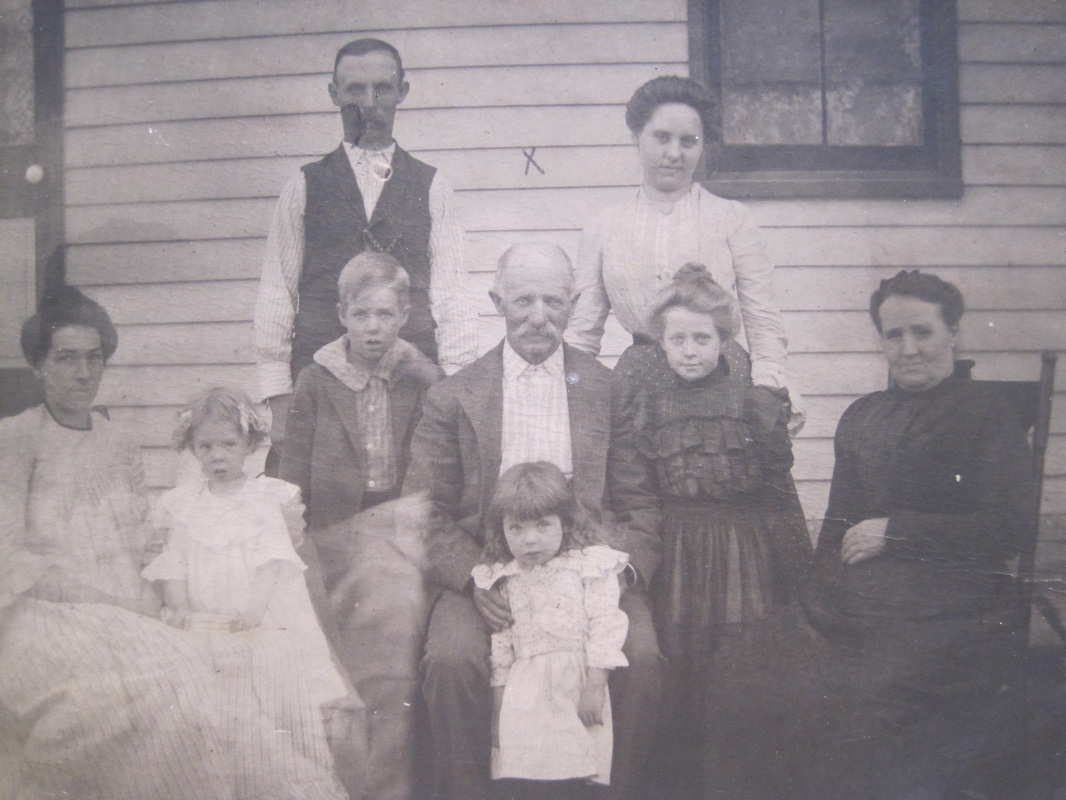 The Whetsels of Brownsville, Indiana, about 1900. As did I, my grandmother Hazel arrived later in her parents' life. Far right, seated, is her mother, Sally Ann, who interacted with Indians as a girl, and saw the Abraham Lincoln Funeral train. Her youngest daughter -- my Grandma Hazel -- stands next to her. Hazel's father is seated in the center. I recognize Grandma's sister, Etta, in the back. The little kids are probably Hazel's nieces and nephew. Mine are nearly my age, too. 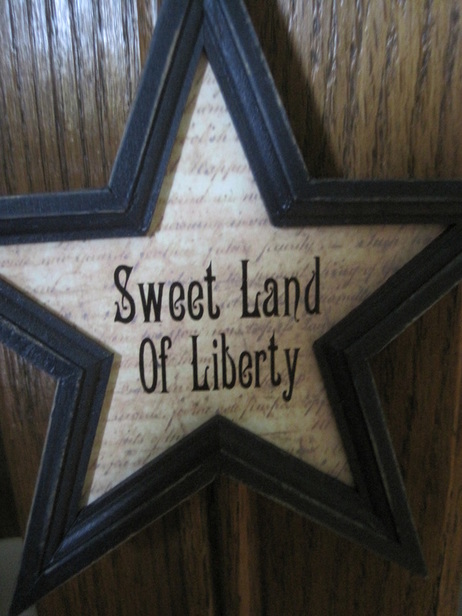 Thank you, Debbie! I love it! Thank you, Debbie! I love it! I had the pleasure of sharing a meal and an evening with the women of Young Moderns Home Extension Club last night. We met in the beautiful farmhouse of Brenda Wiley near Mooreland. As I listened to these friends share time and life together, I started taking notes because, well, I had an idea. I thought I’d post a blog about them. Instead, I’ve decided to talk about them and their club, which dates to 1964, and has met every month since then (with the rare winter-weather exception) during County Club Night in October. I don’t want to spoil what I’ll have to say (no worries, it's all good) but suffice it to say I’m honored to have spent the evening with them. When I’m with Extension Homemakers, I’m home. For now though, here’s their photo, and a thanks to the ladies for having me, and to Brenda for inviting me. Mail call … Isn’t it exciting to get a surprise in the mail? When I reached into the box today, I pulled out a medium-sized package from my friend Debbie McCray from Ohio, and thought, What in the world? Debbie has been on a family trip, and is busy with her volunteer work with an organization called Cancer Hope, which is very important to her, and we hadn’t had any recent email conversations that would indicate something was headed my way. I opened it up to find something wrapped up and tied with a bow in tissue paper. It was this … a Sweet Land of Liberty ornament / decoration! I love it. Debbie had come across it at a friend’s sale and thought of me. Debbie, thank you! And with it came a lovely homemade card (she is an expert at making beautiful, one-of-a-kind cards) explaining the gift, and with the fall colors and phrasing on the front of it, expressed how she looks forward to the fall just ahead. Me too! Speaking of Mail … Yesterday’s mail also brought a surprise card, this one from our friends John and Debby who spent a chunk of Labor Day with us here. Debby thanked us for the meal, for catching up, and said we need to get together more often. That we do. That we will! And thanks to them for coming up to visit. Next stop together: Jungle Jim’s in Ohio! And Red Lobster on the way home. Give me Liberty … Sweet Land of Liberty is, of course, our great nation, the U.S.A. To me personally, the phrase also relates to my love for my hometown of Liberty, Indiana, and to my book that takes place in a fictional bed and breakfast, and novel by the same name, Sweetland of Liberty Bed & Breakfast. This weekend I’ll have copies of that book, and the sequel, That Sweet Place: At Home in the Heartland, at Founders Day(s) on the courthouse square in Liberty, Indiana. I’ll be wearing this, a pioneer-ish ensemble. (emphasis on ish). I’ve got some storytelling to do tomorrow. Come see me! 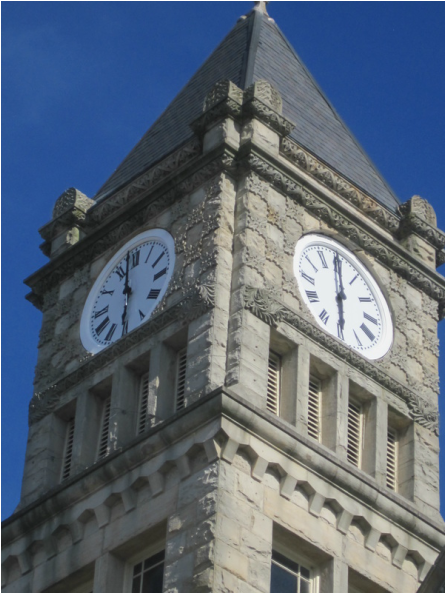 Tower of the beautiful Union County, Indiana courthouse. Tower of the beautiful Union County, Indiana courthouse. It’s fall-festival time of year in the Hoosier state. Most every weekend from now on until it turns into church-bazaar season, there are festivals throughout Indiana. This year the festivals are even more jazzed up because it’s Indiana’s Bicentennial. This weekend I’m heading back to the mid-1800s. This week I’m gearing up for my debut as a pioneer woman. Well, make that a pioneer-ish woman. I’m wearing a long, borrowed, old-timey skirt, (thanks John Guglielmi and First Nighters Theatre) a not-so-old-timey apron, cameo jewelry and spending Saturday and Sunday, Sept. 10-11 on the Union County courthouse lawn. Periodically on Saturday I’ll be doing some readings. I’ve chosen William Miller Herschell’s classic, “Ain’t God Good to Indiana” and some James Whitcomb Riley. I’ll also be talking about Mary Alice Smith. You might know her as Annie. Back in the 1800s, Mary Alice lived on a small farm outside of Liberty. This explains why the folks of Union County have a particular interest in Riley, the famed Hoosier poet. Hang with me, here. At age 9, due to her mother’s passing and either her father’s death or incarceration (it is unclear which), Mary Alice was left an orphan and relatives found room-and-board for her as a hired girl for the Riley family in Greenfield. She came to what is by accounts the benevolent Riley household with her share of stories – which surely fed the imagination of young Jim “Bud” Riley. Years later he wrote his most beloved poem, “Little Orphant Annie,” about this charming girl and her tales. The poem is credited with eventually inspiring the story and musical, “Annie,” and even said to have inspired the Raggedy Ann doll. Nevertheless, only in recent years did I learn (or it register with me) that Mary Alice, aka Annie, was from my hometown. If you were a sixth grader in Mrs. Ruth Lawson’s reading class in the 1960s and 70s, you memorized the poem and I’m betting that you can recite it still. Back then, I don’t remember an emphasis on Mary Alice, but from here in my late 50s, I'm curious about this girl who spent her childhood on the same place on the map that I did and fame found her to an extent she probably never knew. There are other things going on this weekend at Founders Day in Liberty, small-town doings, you might say. I’m posting the flyer, below. I am grateful, once again, to Kelly Finch who asked me to be there to be a part of things and bring along my books. She’s even providing a tent for me next to hers. Kelly is one of those people who for no reason other than she totally rocks, has taken a special interest in my book journey and I owe her for presenting me with several opportunities. So if you’re in Liberty this weekend (and why wouldn’t you be?), stop and see me on the courthouse-square lawn. Oh, you’ll find it easy enough. Follow the scent of the ham and beans. The butter will churn. There will be a Raggedy Ann and Andy contest, bluegrass music will play, and jugglers juggle, and there's an old-fashioned cake walk. Small-town stuff. Hometown stuff. Simple, almost-fall pleasures. Maybe you'll catch a glimmer of why I love this place so much. |
|
